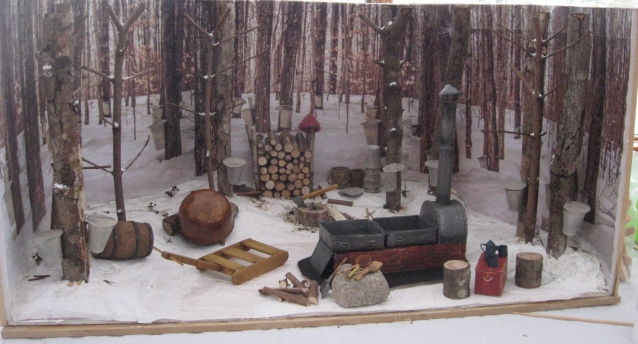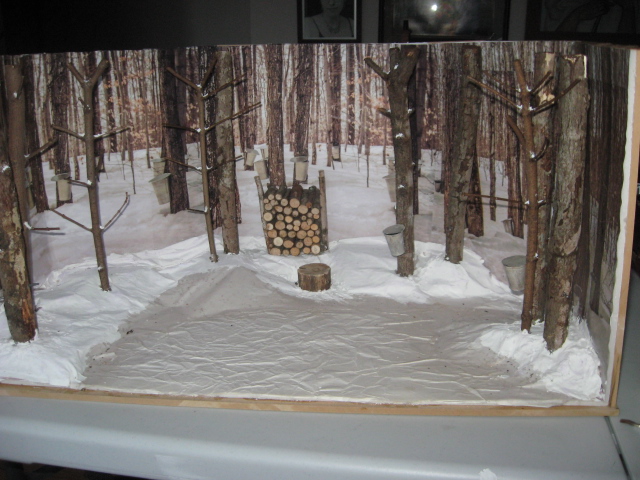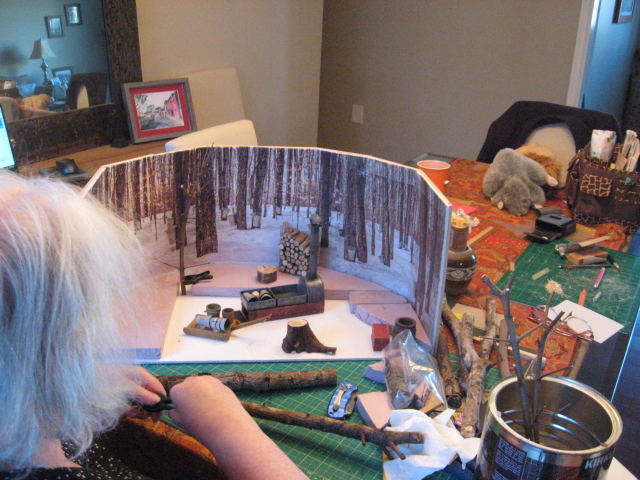Odd title, right? You'll soon see why. I pulled out three old (quite old!) kits today, thinking that I could finish them for the show in early May, and perhaps make some young collectors happy with low, low prices. They all came to me second-hand, and they ALL had their problems. Here they are, only one came completely sealed, the other two had been opened. I did the embroidery earlier, more about that below!
This is the oldest one, I don't know how many years I've had this, and if you look closely, one of the bars on the tapestry frame and the back rung of the chair are a different colour. They were missing, but it had been opened, and I figured I could still put it together as I had the right size of dowel in my stash. The red fabric, embroidery Aida cloth, is destined for the chair seat. The larger, quilty-looking piece, is intended to go on the embroidery frame, as per the photo. Hmmm, it's very much out of proportion with the wooden pieces provided for the frame, if you go by the photo on the front of the kit....
This is one I inherited from a mini friend who retired due to health reasons. It too had been opened, and all the dowels were missing, but again, I was able to cut them from my stash. This kit had dried out quite a bit, so there was a bit of damage on one of the frame legs, and some of the ply kind of let go when I was knocking the cross-bar dowelling in, but that was glued and sanded. The black tapestry goes in the frame, the red is again the chair seat. Folded over lengthwise, the tapestry might fit the frame....This is another inherited piece, the only one that was still sealed in its package. However, when I began to sand it, it was apparent that the cutting of the piece - they were die-cut in a piece of plywood - was done backwards, which means the rough edges of the dowel holes are on the better side of the wood. It was necessary to fill the edges of all the dowel holes on one side of the bench. It has a piece of upholstery and a little rug with fringed edges. This one might just work without too much changing around....
The embroidery thread which came with the kits was like very thick sewing thread, in terrible colours, so I dug into my stash of floss and used my own threads for the embroidery on all the pieces. I did begin the little tapestry and the quilt with the colours provided, and the effect of the things was, well, like it had been dragged through the mud, so I pulled it all out, and I like my colour choices much better. I also decided to minimize the amount of outline stitching in dark thread on the above two pieces, and just outlined the rose buds and their leaves, much daintier. The kit had provided black thread, but you should avoid outlining in black, but use dark brown or dark gray instead, especially on miniatures.
The package fronts show two stained kits, and one painted one. These will all be painted, as you cannot, with the best will in the world, hide the plies in the plywood. Chalk paint in white seems the best choice to me for this, and I hope to pick some up tomorrow, as the white chalk paint I had had dried out.
In order to finish these pieces, I have to re-make the frame for the quilt; it may work out best if I replace the sides of the tapestry piece with the sides for the quilt piece, using the longer sides of the tapestry frame and replacing the cross-bars with longer ones to, hopefully, show the whole of the quilt top.
I thought these would be quick little projects....






















